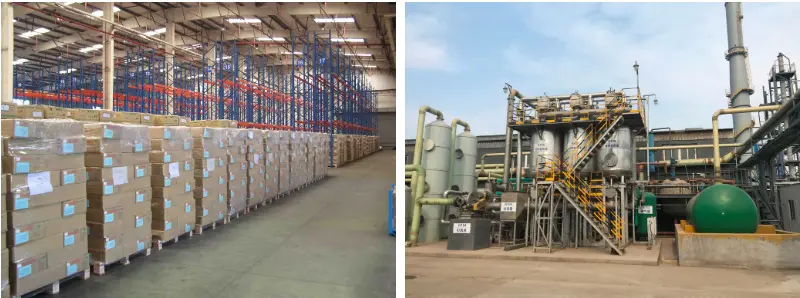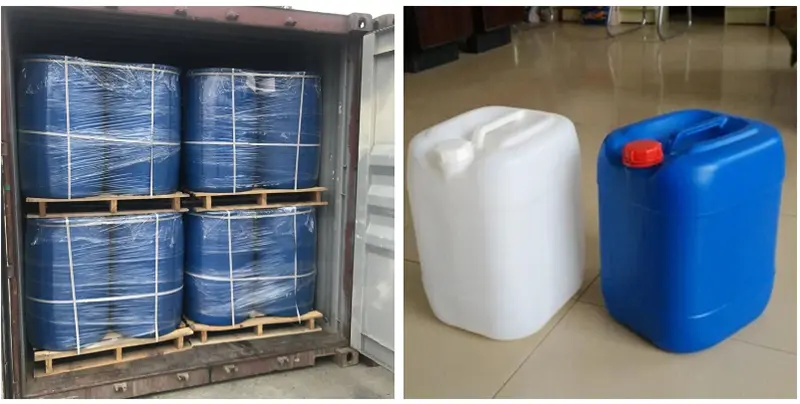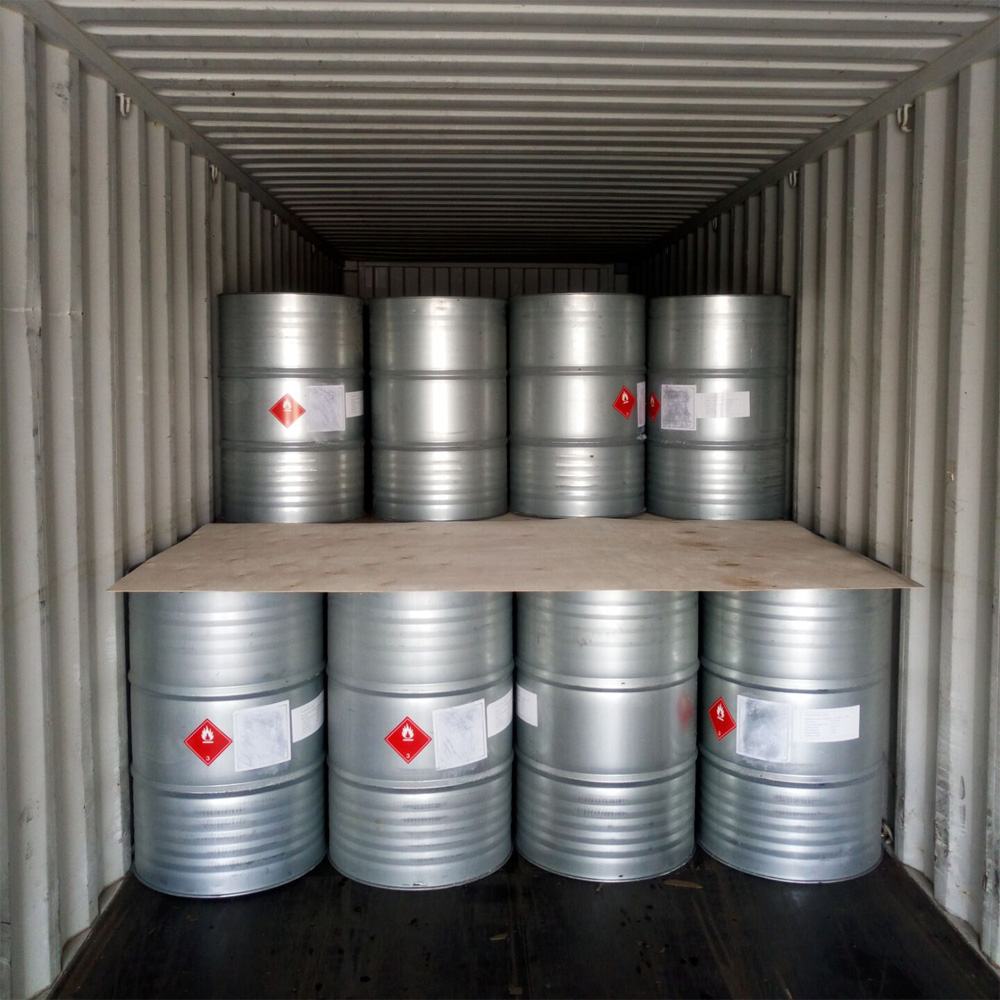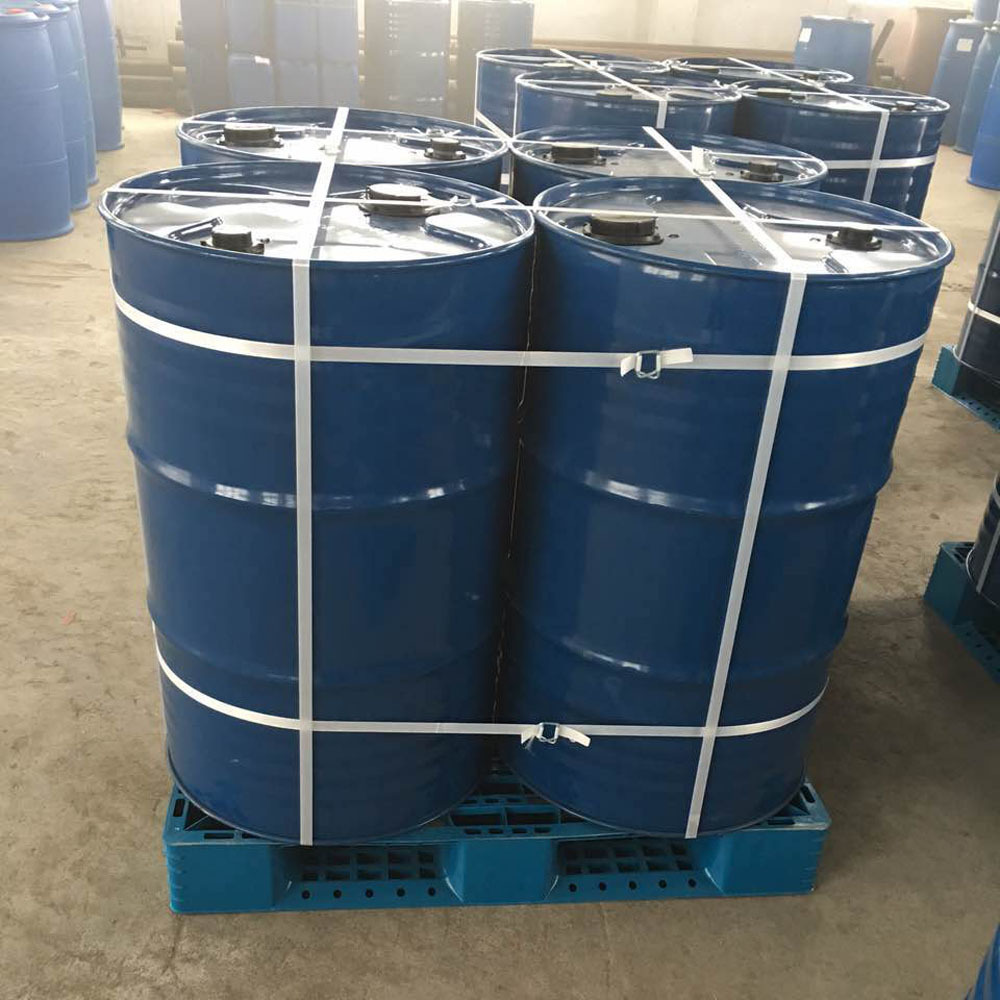Triethylamine CAS#121-44-8
Triethylamine CAS#121-44-8 Promotion Season Now in Store and Free Sample for Testing with Factory Price
Chemical Name:Triethylamine
CAS No.121-44-8
Molecular Formula:C6H15N
Molecular weight:101.19
Sample: Available
Mode of Transportation
1. By Air, fast but expensive.
2. By Sea, usual and economy.
3. By Train, suit for middle Asia countries.
4. By Express, suit for small package.
We only provide highest quality goods available, accompanied by after support!
Products Description of Triethylamine CAS#121-44-8
Triethylamine (molecular formula: C6H15N), also known as N,N-diethylethylamine, is the simplest homotrisubstituted tertiary amine. It has the typical properties of tertiary amines, including salt formation and oxidation. Triethylamine has no reaction in the Hisberg reaction. It is a colorless to light yellow transparent liquid with a strong ammonia odor and a slight smoke in the air. Boiling point: 89.5℃, relative density (water = 1): 0.70, relative density (air = 1): 3.48, slightly soluble in water, soluble in ethanol and ether. The aqueous solution is alkaline. It is flammable, and its vapor can form an explosive mixture with air, with an explosion limit of 1.2% to 8.0%. It is toxic and highly irritating.
Triethylamine Chemical Properties
Melting point | -115 °C |
Boiling point | 90 °C |
density | 0.728 |
vapor density | 3.5 (vs air) |
vapor pressure | 51.75 mm Hg ( 20 °C) |
refractive index | n20/D 1.401(lit.) |
FEMA | 4246 | TRIETHYLAMINE |
Fp | 20 °F |
storage temp. | Store below +30°C. |
solubility | water: soluble112g/L at 20°C |
pka | 10.75(at 25℃) |
form | Liquid |
Specific Gravity | 0.725 (20/4℃) |
color | Clear |
PH | 12.7 (100g/l, H2O, 15℃)(IUCLID) |
Relative polarity | 1.8 |
Odor | Strong ammonia-like odor |
Odor Type | fishy |
Odor Threshold | 0.0054ppm |
explosive limit | 1.2-9.3%(V) |
Water Solubility | 133 g/L (20 ºC) |
Merck | 14,9666 |
JECFA Number | 1611 |
BRN | 1843166 |
Henry's Law Constant | 1.79 at 25 °C (Christie and Crisp, 1967) |
Exposure limits | NIOSH REL: IDLH 200 ppm; OSHA PEL: TWA 25 ppm (100 mg/m3); ACGIH TLV: TWA 1 ppm, STEL 3 ppm (adopted). |
Dielectric constant | 5.0(Ambient) |
Stability: | Stable. Extremely flammable. Readily forms explosive mixtures with air. Note low flash point. Incompatible with strong oxidizing agents, strong acids, ketones, aldehydes, halogenated hydrocarbons. |
InChIKey | ZMANZCXQSJIPKH-UHFFFAOYSA-N |
LogP | 1.65 |
CAS DataBase Reference | 121-44-8(CAS DataBase Reference) |
NIST Chemistry Reference | Triethylamine(121-44-8) |
EPA Substance Registry System | Triethylamine (121-44-8) |
Safety Information
Hazard Codes | F,C |
Risk Statements | 11-20/21/22-35 |
Safety Statements | 3-16-26-29-36/37/39-45-61 |
RIDADR | UN 1296 3/PG 2 |
WGK Germany | 1 |
RTECS | YE0175000 |
F | 34 |
Autoignition Temperature | 593 °F |
Hazard Note | Highly Flammable/Corrosive |
TSCA | Yes |
HazardClass | 3 |
PackingGroup | II |
HS Code | 29211910 |
Hazardous Substances Data | 121-44-8(Hazardous Substances Data) |
Toxicity | LD50 orally in rats: 0.46 g/kg (Smyth) |
IDLA | 200 ppm |
Product Application of Triethylamine CAS#121-44-8
1. Triethylamine can be used as a solvent and raw material in the organic synthesis industry. It can be used to prepare catalysts for phosgene-based polycarbonate, inhibitors for tetrafluoroethylene, rubber vulcanization accelerators, special solvents in paint strippers, enamel anti-hardening agents, surfactants, preservatives, bactericides, ion exchange resins, dyes, fragrances, drugs, high-energy fuels and liquid rocket propellants, etc. Products that consume triethylamine in the pharmaceutical industry include (consumption quota, t/t): ampicillin sodium (0.465), amoxicillin (0.391), Pioneer IV (2.550), cefazolin sodium (2.442), cefradine (1.093), piperacillin (0.584), ketoconazole (8.00), vitamin B6 (0.502), fluoxic acid (Chemicalbook 10.00), praziquantel (0.667), thiotepa (1.970), penicillamine (1.290), berberine hydrochloride (0.030), isoprenaline (0.540), alprazolam (3.950), o-chlorophenylacetic acid (0.010) and pipemidic acid, etc.
2. Used in the preparation of quaternary amine compounds and the synthesis of catalysts, and also used as rubber vulcanization accelerators, penetrants and waterproofing agents;
3. Manufacture of quaternary ammonium compounds, synthesis of catalysts, rubber vulcanization accelerators, and photographers. Mobile phase modifier, used for separation of acidic, alkaline and neutral drugs by reverse phase high performance liquid chromatography (RP-HPLC).
4. Improve the separation of amino acids and amino acid amides by suppressing tailing. Used in the manufacture of medicines, pesticides, inhibitors, high energy fuels, rubber vulcanizers, etc.
Factory and Equipment Show


Fast delivery time
Inventory 2-3 working days New production 7-10 working days









